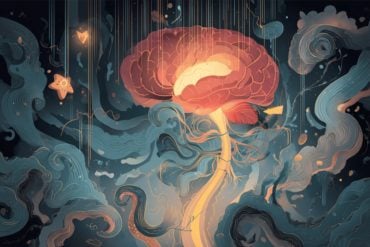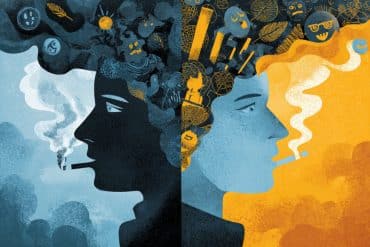Summary: A new study finds that the urge to move to music—known as groove—is a distinct physiological response, separate from musical enjoyment. Researchers examined individuals with musical anhedonia, who feel little or no pleasure from music, and found they still had a strong urge to move when listening to rhythmic beats.
Participants rated how much pleasure they experienced and how much the music made them want to move, revealing that movement itself may generate pleasure for those with anhedonia. Unlike previous expectations, these individuals showed normal groove responses, suggesting that rhythm-based movement engages brain circuits differently from those responsible for musical enjoyment.
Key Facts
- Movement-Driven Pleasure: People with musical anhedonia still experience an urge to move to music, even if they don’t enjoy it.
- Separate Brain Circuits: The dorsal striatum, linked to movement, may drive groove responses, while the ventral striatum regulates musical pleasure.
- Future Brain Studies: Researchers plan to use MRI and magnetoencephalography to investigate how brain connectivity differs in individuals with musical anhedonia.
Source: Concordia University
The pleasurable urge to move to music — to groove — appears to be a physiological response independent of how much we generally enjoy music, according to a new paper led by Concordia researchers.
That groove response is so strong it is even found in people with musical anhedonia, those who take little or no pleasure from music.
The article’s lead author is Isaac Romkey, a PhD student in the Department of Psychology. He writes in the journal PLOS One that recent research shows the two aspects of groove, pleasure and urge to move, while usually closely correlated, may in fact be separable.

To test this, Romkey and his co-authors compared groove responses to more than 50 short pieces of music in people with musical anhedonia and non-anhedonic controls. Participants with musical anhedonia were only included if they derived pleasure from other aspects of life, like food and sex, and if they exhibited appropriate reward responses across other metrics.
The researchers also ensured participants were not depressed and had intact pitch and beat perception. Participants listened to short pieces of music designed to elicit a groove response and varied in rhythmic complexity. After each piece, they were asked to rate how much pleasure they experienced and how much it made them want to move.
“Normally, we would expect to see an inverted U-shaped response to rhythmic complexity, meaning that we want to move to music that is of medium complex rhythms as opposed to music that is very simple or very complex,” Romkey explains.
Based on this, the authors hypothesized that people with anhedonia would show lower pleasure ratings but preserved urge to move ratings for groovy music.
However, they found no differences in either pleasure or urge to move in anhedonics compared to controls. More importantly, they showed that for people with anhedonia, the urge to move appears to drive their experience of pleasure. That suggests that the blunted pleasure sensation found in people with musical anhedonia is compensated by the urge to move.
“In the musical anhedonia group, we expected to see a flattening of that U-shaped curve, but that is not what we saw. That implies that for those with musical anhedonia, they derive pleasure from the urge to move. More generally, it suggests that the urge to move may itself generate pleasure.”
Same response, different sources
The causes of musical anhedonia remain understudied, but Romkey says it appears to be heritable. He does note that the urge to move has been linked to the dorsal striatum, a part of the brain that is linked to motor functions, while pleasure is more associated with the ventral striatum, which regulates reward, motivation and goal-directed behaviour.
“For future studies, we are going to look at differences in functional and structural connectivity in the brain between anhedonics and controls in the dorsal and ventral striatum using imaging techniques including MRI and magnetoencephalography,” he says.
About this music anhedonia and movement research news
Author: Patrick Lejtenyi
Source: Concordia University
Contact: Patrick Lejtenyi – Concordia University
Image: The image is credited to Neuroscience News
Original Research: Open access.
“The pleasurable urge to move to music is unchanged in people with musical anhedonia” by Isaac Romkey et al. PLOS One
Abstract
The pleasurable urge to move to music is unchanged in people with musical anhedonia
In cognitive science, the sensation of “groove” has been defined as the pleasurable urge to move to music.
When listeners rate rhythmic stimuli on derived pleasure and urge to move, ratings on these dimensions are highly correlated. However, recent behavioural and brain imaging work has shown that these two components may be separable.
To examine this potential separability, our study investigates the sensation of groove in people with specific musical anhedonia. Individuals with musical anhedonia have a blunted ability to derive pleasure from music but can still derive pleasure from other domains (e.g., sex and food).
People with musical anhedonia were identified as those with scores in the lower 10% of scores on the Barcelona Musical Reward Questionnaire, but who had no deficits in music perception, no symptoms of depression, average levels of physical and social anhedonia, and sensitivity to punishment and reward.
We predicted that if the two components of groove are separable, individuals with musical anhedonia would experience lower levels of derived pleasure but have comparable ratings of wanting to move compared to controls.
Groove responses were measured in an online study (N = 148) using a set of experimenter-generated musical stimuli varying in rhythmic and harmonic complexity, which were validated in several previous studies.
Surprisingly, we found no significant differences in groove response between individuals with musical anhedonia (n = 17) and a matched control group (n = 17). Mediation analyses for the anhedonia sample found that wanting to move ratings fully mediated the effect of rhythmic and harmonic complexity on pleasure ratings.
Taken together, these results indicate that the urge to move may compensate for the blunted pleasure sensation in those with musical anhedonia.
More generally, these results suggest that the urge to move is a primary source of pleasure in the groove response.






